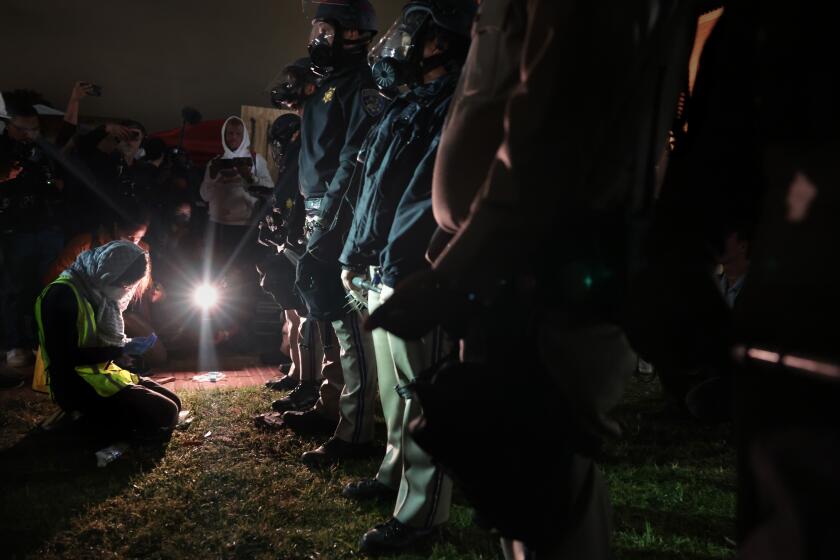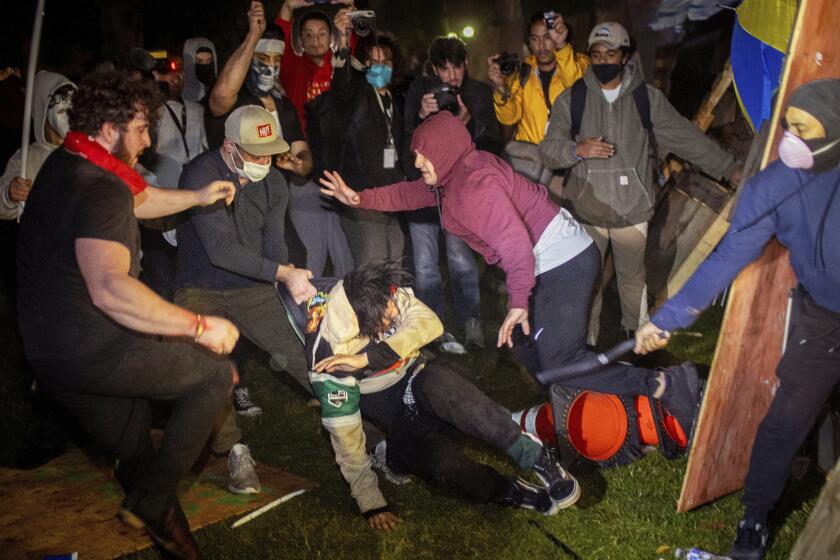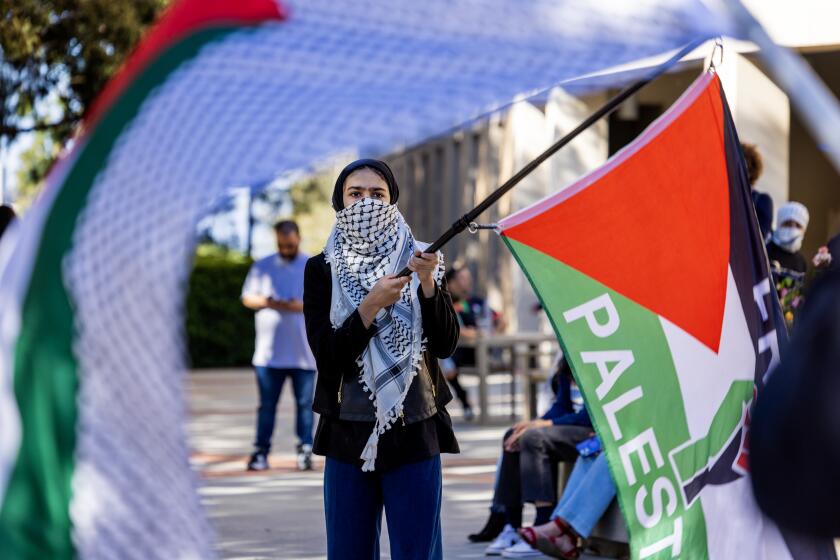Bused in
What am I doing here?
That’s the question I asked myself again and again during my first week of fifth grade at Loyola Village Elementary School in Westchester. The school was nice, much nicer than my previous school on the edge of Watts, but it felt alien.
At first, I walked around the playground almost gingerly, as if I were on a field trip to a botanical garden or a museum, walking through an exhibit. Kids whooped and laughed around me, local kids wearing beach-type clothes and tennis shoes that made my coordinated fall outfits and knee socks seem much too formal.
The Loyola kids were mostly white; I and about 40 other kids who rode the bus there daily from South L.A. were mostly black. We were all part of a 1970s integration experiment that school officials hoped would unfold quietly in a largely white but low-profile corner of the city.
My parents saw my daily bus trip as a matter of racial justice, as the fulfillment -- finally -- of the Supreme Court’s decision in Brown vs. Board of Education, issued nearly 20 years earlier. No, we didn’t live in Westchester. But students of color could now stake a claim in the place and the quality of life that it stood for. If it was not coming to us, we were going to it.
That didn’t mean it was easy.
The classrooms were integrated, and the gifted program was something that simply didn’t exist at my old school. But except for team sports, playground activities were mostly separate. I played tetherball, jump-rope and hand-clapping games with other black girls. Many of the white girls preferred to talk at recess, huddling regularly in small groups like they were holding an ongoing conference. I knew part of that talk was about us.
And then there was naked racism. My best friend at the time reminded me recently how, on that first day, a small band of local kids stood at the entrance and yelled, “The niggers are coming, the niggers are coming!” as we walked up.
I have another memory that’s more vivid because it was far less expected. I’d made a white friend, Lisa, and one Friday she invited me to sleep over at her house. We decided to visit a classmate who lived close by. But once there, I was barred from entering the house. This classmate, whom I saw every day, stood in the doorway and declared, to my astonishment and deep embarrassment, “I don’t let niggers in my house.” I never felt so much at a loss.
Though I never fully divested myself of the sense of being a visitor, by the time I graduated in 1973, I was much more a part of things than I had been two years earlier. I had made a few real friends who were white, something that couldn’t have happened in South-Central. I genuinely liked a couple of my white teachers, and the feeling seemed mutual. I even worked as a cashier in the cafeteria for a while, a position that gave me downtime to mingle with Westchester kids more casually than was possible in the classroom or on the playground. The mixing, such as it was, served me well later on in bigger, far more intimidating and overwhelmingly non-black educational settings like UCLA.
Overall, my time at Loyola was awkward and puzzling -- I never really figured out why I had been sent there. But it was a step toward something important, perhaps something truly liberating. The tragic thing is that nobody, black or white, will ever know what that thing might have been because ultimately the experiment failed.
Later groups of kids bused from my neighborhood had no opportunity for true integration because white students didn’t stick around for it. Today, Loyola Village Elementary still sits in a largely white neighborhood, but less than 20% of the student body is white. More than 75% is black and Latino. Westchester High down the street is the most heavily black high school in the Los Angeles Unified School District .
That strange equation -- white neighborhood, black and brown school -- has become common in L.A. Call it educational flight. Students of color flee from inferior schools, only to see white students at their new schools flee from them.
After our initial foray in 1971, black students were bused to places far beyond Westchester -- Pacific Palisades, Woodland Hills, Canoga Park. But today, most aren’t going with the intent of integrating schools. They’re simply trying to escape the growing inadequacies of their local schools and neighborhoods. And it’s hard to say that the migration has helped. Black students are still the lowest-performing group in the LAUSD.
I recently visited the Loyola Village campus for the first time in decades, to speak about my integration experiences to a British news crew. But I hardly knew what to say. The sight of so many black and brown children running merrily around Loyola’s playground, owning it as I never did, was at once encouraging and disturbing. What could I say about this picture that wasn’t already evident?
I was glad to leave. I’d had some trouble finding the campus on my way there, but going home -- to Inglewood, a nearby city as black and brown as Westchester isn’t -- I didn’t have to think at all about where I was going.
--
Erin Aubry Kaplan is a contributing editor to the Opinion pages.



